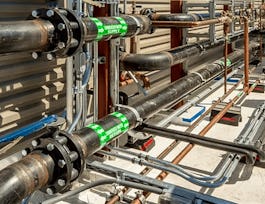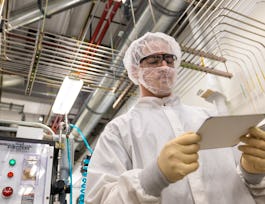Welcome to the comprehensive course on Process Plant Equipment and Materials for Construction. This course is designed to provide aspiring Engineers and professionals in the field with a deep understanding of the intricacies involved in designing, fabricating, and maintaining essential equipment for industrial processes.
In the first part of this course, we will delve into the diverse world of process plant equipment and materials. From classification and layout considerations to mechanical and thermal properties affecting design, learners will explore the fundamentals of equipment selection and construction. Through case studies and real-world examples, participants will gain insights into the specialized requirements of various industrial sectors, including refineries, petrochemicals, power plants, and fertilizers. The course will cover essential topics such as metal forming processes, surface development, plate bending, and refractory applications, providing a solid foundation for further exploration into the intricacies of process plant construction. In the second part of the course, we will focus on the critical techniques of shell forming and tube bending, essential for the fabrication of process plant equipment components. Learners will delve into the principles and practices of metal forming processes, including sheet metal forming, plate bending, and dished end forming. They will also explore the intricacies of tube bending and pipe bending, mastering techniques to create efficient piping systems required in industrial facilities. Through hands-on exercises and demonstrations, participants will develop practical skills in shaping raw materials into intricate components, ensuring structural integrity and functionality in process plant equipment. The final part of the course will provide a comprehensive overview of the manufacturing lifecycle of pressure vessels, integral components of process plant equipment. Learners will gain insights into the types of pressure vessels, components, and manufacturing processes involved in their fabrication. From planning and sequencing to plate cutting, welding, refractory application, and post-weld heat treatment, learners will explore each stage of the manufacturing cycle in detail. Through case studies and practical examples, they will understand the importance of precision, quality control, and adherence to safety standards in ensuring the reliability and integrity of pressure vessels for Industrial applications. By the end of this course, participants will emerge with a holistic understanding of process plant equipment and materials, equipped with the knowledge and skills to excel in the material selection, fabrication, and maintenance of Industrial facilities. Join us on this journey as we unravel the complexities of process plant construction and empower you to make meaningful contributions to the field of Industrial Heavy Engineering. Target Learners: Working Professional of Mechanical, Manufacturing and Chemical Engineers Undergraduate students of Mechanical, Manufacturing & Chemical Engineering Students from Manufacturing and Automation Post-Graduate Students of Computer Integrated Manufacturing Practicing Engineers in Process Plant equipment Diploma students of Mechanical / Manufacturing



















